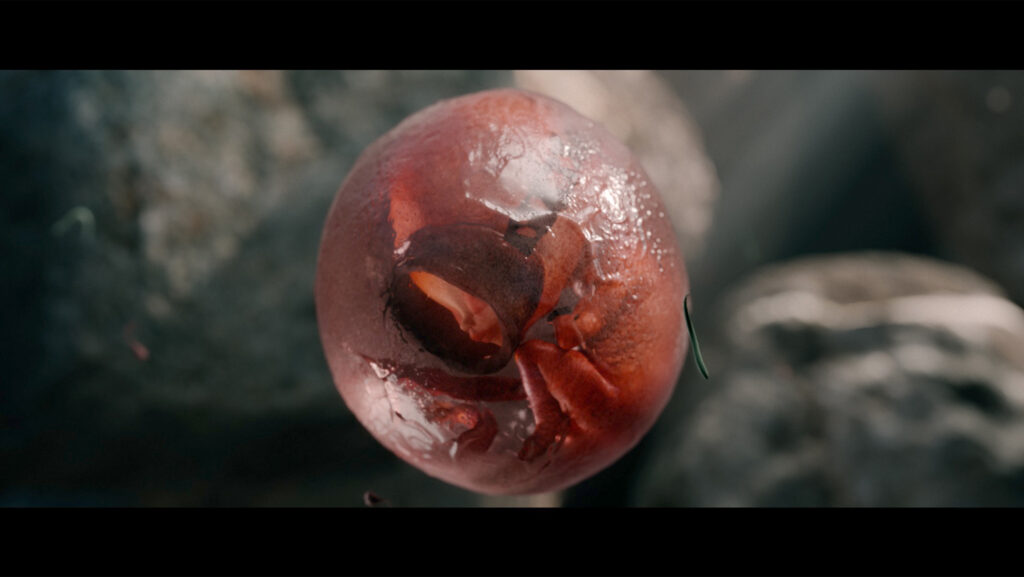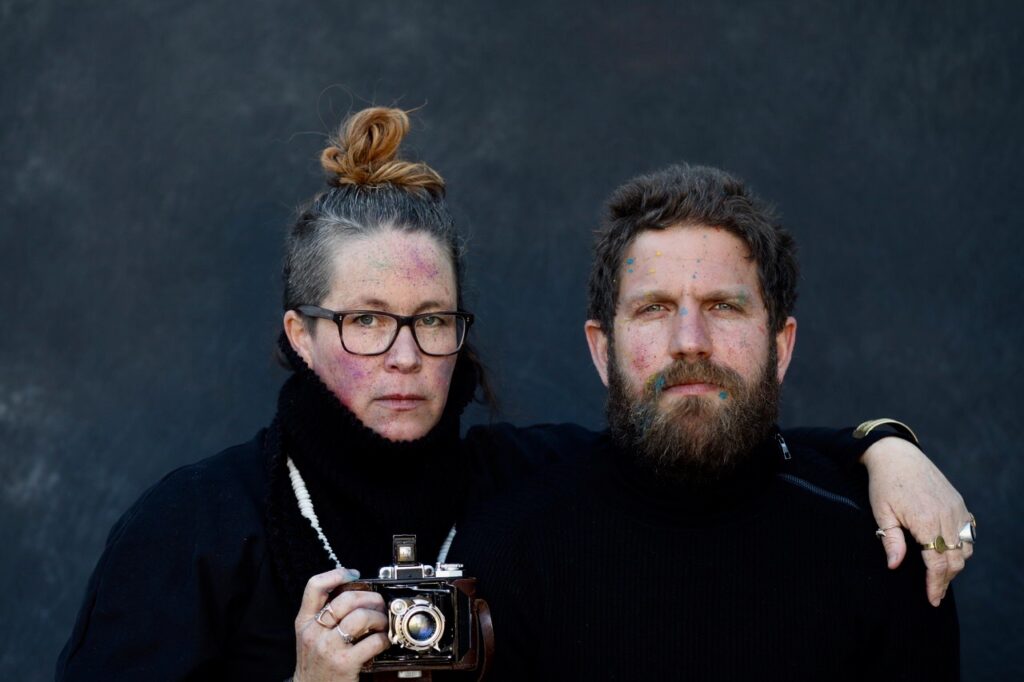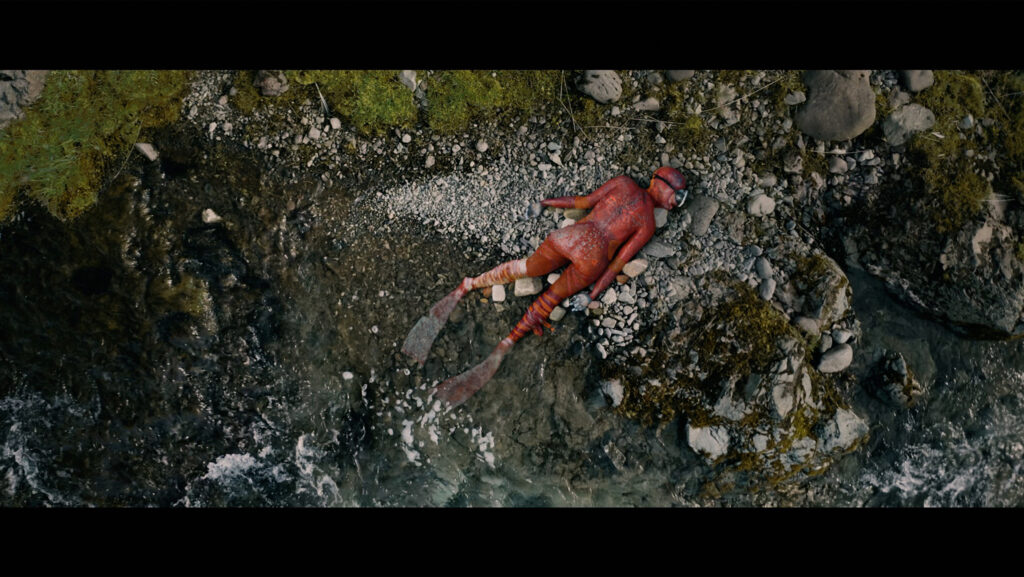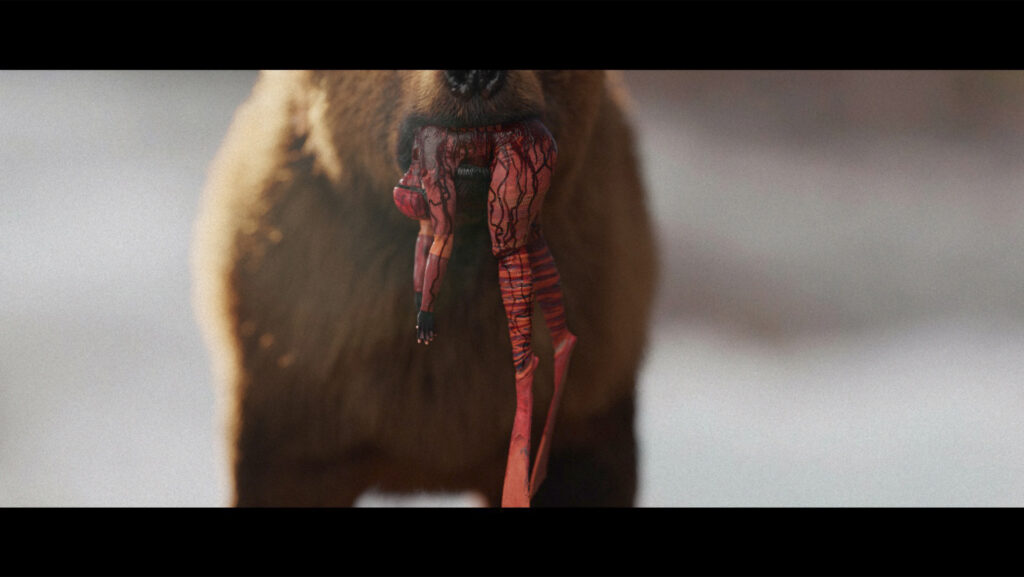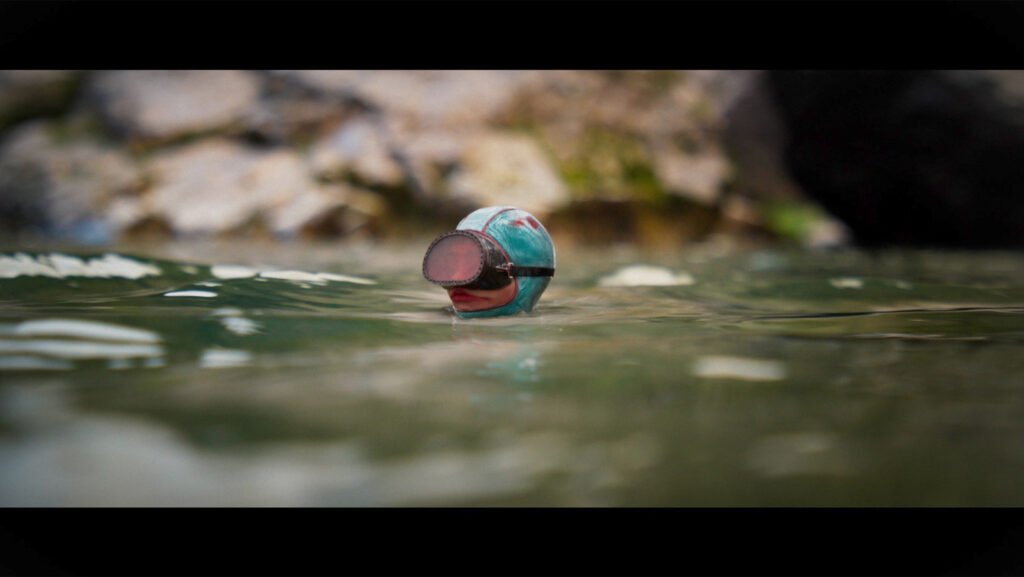Of the array of species that live on this planet, the life of a salmon is especially fascinating. Born in freshwater, these resilient fish migrate to the ocean, only to travel all the way back to the exact spot where they were born, to lay eggs and then die.
In the animated short film Wild Summon, filmmakers Karni Arieli and Saul Freed have showcased the disturbing life cycle of a wild salmon. The duo has, however, replaced the salmon with a human female form in this story. The film blends real-life shots of Icelandic landscapes with animated female swimmers personifying the salmon, who go through treacherous journeys encountering predators and pollution, forcing the viewer to confront humanity’s connection with nature. A stark representation of climate change and species protection, Wild Summon covers the circle of life and motherhood.
Created by Arieli’s and Freed’s studio Sulky Bunny and produced with support from British Film Institute, the short premiered at the Cannes Film Festival 2023. It was then screened at festivals like Annecy, Clermont-Ferrand International Short Film Festival, Raindance, and broadcast on European channel Arte. The film was shortlisted for Oscars and nominated for Bafta.
The duo Arieli and Freed took a hands-on approach of method directing to make this short – they went to live in Iceland and learnt how to dive to experience life as a salmon. Their son went with them and was the aerial cinematographer in the film. The duo has now taken up the herculean task of transforming Wild Summon into a feature film.
In an email interaction with AnimationXpress, Arieli and Freed shared the creative processes behind Wild Summon and offered insights into their journey of crafting impactful stories.
What inspired the concept of Wild Summon?
Our films have always had elements of hybrid animals and nature. In recent years, we have been trying to create films that deliver a wider message and deal with bigger ideas. The idea for Wild Summon came from a long history of preoccupation with wildlife and the natural world throughout our careers.
What was the thought behind replacing the salmon with a human?
Coming up with this surreal swap of replacing the salmon with a human female form was definitely a eureka moment. The thought was more about imagining alternate realities and surreal images of small humans swimming up rivers. We saw the huge potential it had in delivering this story in a way that would make people feel and think. But we quickly realised that it carries a huge amount of meaning and metaphor with it. The most significant being that we humans have an automatic emotional reaction to things that look like us. Seeing a fish gutted is maybe a little unpleasant, but if it’s a human, it’s unbearable. And that’s a huge difference. It throws a curveball into our emotional wiring, and smashes the numbness we suffer from in the age of image and media bombardment.
What kind of research did you conduct?
Well, we had to more or less learn everything we could about this amazing fish. There are obviously a lot of natural history documentaries that cover this subject, but reading deeper into a number of books gave us a better understanding of many aspects, for instance, how sensitive the salmon is to water pollution and temperature change, and how many species rely on it for food.
Could you explain the post-production and animation process?
We shot background plates and drone footage in Iceland where rivers are still very pristine and healthy. Since this is a real story with real places these fish swim to, it was important to keep the backgrounds realistic, so as not to give the impression that this is a complete fantasy. Additionally, it’s an eco film so we thought it should align with natural history documentaries.
Post the shoot was the standard visual effects pipeline process of tracking shots (although tracking underwater is a different game), animating the characters (using Autodesk Maya), lighting and composite. The challenge was the amount of shots (over 200) and heavier tasks like water simulation where we created a CG river.
The style of animation proved to be interesting. We found that to implement our concept of replacing a fish with a human, our human-fish had to have minimal facial and body expressions. Anything extravagant felt out of style. We spent a long time designing our character, contemplating the fish-human proportions, her costume and overall look.
How many people have worked on this film?
A very small crew. No more than 10 people were involved. We (Karni, Saul and Yuli) shot, animated and edited the film ourselves. Our younger kid accompanied us to film in Iceland (and stopped eating seafood as a result).
What was the part that each of you enjoyed the most while making this film?
Being in the river! Being in nature! Being with our family on an adventure. Making something new and pushing the boundaries.
It is common to sound preachy while telling any environment/climate change story. Wild Summon, however, is nothing like that. How did you approach this film differently?
The important aspects of Wild Summon for us were to narrate wildlife stories that highlight the emergency of our ecological crisis without being alarmist, depressing or preachy. We believe we found a way to tell the story in an exciting and original way through emotional engagement. We are of the opinion that with this film, we cut through the noise to astonish viewers and gave them a fresh perspective.
Tell us something about the music in the film.
We took on the task of creating the music for Wild Summon ourselves. The idea was to contradict the Nordic imagery with Middle Eastern-inspired musical instruments and scales. The approach was to craft emotionally driven music, diverging from the typical background scores of natural history documentaries. We treated it more like road trip music.
What is the vision of your studio Sulky Bunny?
Our studio is in our back garden and we are the team. Our work ranges from intimate projects with minimal crews to bigger ventures where we collaborate with freelancers or engage other studios, assuming roles as directors or creative leads. Our vision is to keep finding powerful ways to tell stories that matter. We’re dedicated to preserving fantasy and visual delight, especially by featuring female protagonists.
What are the challenges and opportunities of running an indie studio in the UK?
Indie work means pushing the limits of an industry. It’s a struggle by definition. Finding brave, forward-thinking founders, studios, and people who will support and fund projects that are out of the ordinary is not easy. But it’s all in the journey.
What is your next project?
We are developing a number of long form projects, including a series and a feature based on Wild Summon. We hope to build on our experiences and skills to tell amazing stories about nature and fantasy. And maybe make a small difference on the way.

